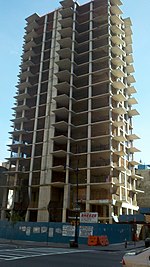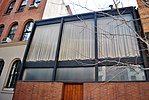Norwegian Seamen's Church, New York

The Norwegian Seamen's Church in New York (Norwegian: Sjømannskirken i New York ) is a Lutheran church serving Norwegian sailors, residents, and visitors in the greater New York City area. The church is located in 317 East 52nd Street on the east side of Manhattan in New York City. It was once located in Carroll Gardens: 54–57 The church is a part of Norwegian Church Abroad within the Church of Norway. Founded in 1864, The Norwegian Church Abroad was established to secure the moral and religious education of Scandinavian seafarers. The church has been working in New York City since 1878. It has been in the present building from 1992. The church is a well-established religious, social and cultural meeting point for Norwegians in America. A guest room in the top floor is rented out to tourists and others.
Excerpt from the Wikipedia article Norwegian Seamen's Church, New York (License: CC BY-SA 3.0, Authors, Images).Norwegian Seamen's Church, New York
East 52nd Street, New York Manhattan
Geographical coordinates (GPS) Address External links Nearby Places Show on map
Geographical coordinates (GPS)
| Latitude | Longitude |
|---|---|
| N 40.755833333333 ° | E -73.966666666667 ° |
Address
East 52nd Street 317
10022 New York, Manhattan
New York, United States
Open on Google Maps





